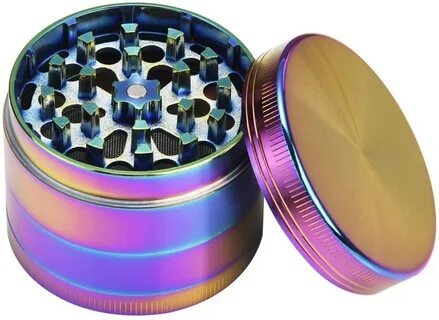Printed Circuit Boards (PCBs) are at the heart of modern electronics, powering everything from smartphones to industrial machines. But even the most carefully manufactured PCB can develop issues — whether due to manufacturing defects, improper soldering, damaged components, or wear and tear over time.
When replacing the entire board isn’t practical, PCB rework becomes the ideal solution. In this blog, we’ll explain what PCB rework is, when you need it, the tools and techniques involved, and how to ensure reliable results.
If you’re searching for “what is PCB rework,” “best practices for PCB rework,” or “how to repair PCBs,” this guide answers your questions.
What Is PCB Rework?
PCB rework refers to the process of modifying, repairing, or replacing components on a printed circuit board to fix defects or update functionality. It is a highly specialized skill that demands precision, proper equipment, and expertise.
Unlike basic soldering, rework often involves handling tiny surface-mounted devices (SMDs), multilayer boards, and sensitive materials without damaging surrounding areas.
Rework is common in industries such as consumer electronics, automotive, aerospace, medical devices, and telecommunications, where the cost of discarding a faulty board can be significant.
When Do You Need PCB Rework?
PCB rework is essential in several scenarios, including:
- Manufacturing Defects: Solder bridges, insufficient solder joints, misaligned components, or incorrect parts placed on the board.
- Component Failure: Damaged or dead components that need replacement.
- Design Changes: Updating or modifying a board to support a new design or feature.
- Accidental Damage: Boards damaged during handling, testing, or shipping.
- Quality Control: Fixing defects identified during inspection before shipping to customers.
By opting for rework instead of scrapping the board, manufacturers save costs, minimize waste, and improve efficiency.
Tools and Equipment for PCB Rework
Successful PCB rework requires specialized tools designed to work with delicate circuits and components. Below are some common tools used:
- Soldering Iron: A fine-tip, temperature-controlled soldering iron is essential for precision work.
- Hot Air Rework Station: For removing and replacing SMD components, a hot air gun allows controlled heating to melt solder without damaging nearby components.
- Desoldering Pump and Wick: For removing excess solder, desoldering pumps and copper wick (braid) are commonly used.
- Microscope or Magnifier: To inspect tiny components and solder joints for defects.
- Preheater: Helps warm the board evenly to prevent thermal shock during rework.
- ESD Protection: Anti-static mats, wrist straps, and ESD-safe tools protect sensitive components from electrostatic discharge.
- Reballing Kits: Used when replacing Ball Grid Array (BGA) components.
Common PCB Rework Techniques
There are several techniques depending on the type of component and defect:
Replacing Through-Hole Components
- Heat the solder joint and remove the faulty component.
- Clean the pads and insert the new component.
- Solder the new component securely.
Replacing SMD Components
- Use hot air or infrared heating to melt the solder.
- Carefully lift off the defective component with tweezers.
- Clean the pads, apply fresh solder paste, and place the new component.
- Reflow the solder using hot air or a reflow oven.
BGA Rework
BGA components are more complex and require reballing — creating new solder balls on the underside of the chip — before reinstallation using precise alignment and heating techniques.
Trace Repair
Damaged copper traces or pads can sometimes be repaired by laying thin copper wires or using conductive epoxy to restore the connection.
Best Practices for PCB Rework
To achieve reliable and high-quality results, follow these best practices:
✅ Use the right tools and keep them well-maintained.
✅ Ensure proper temperature control to avoid overheating.
✅ Work in an ESD-safe environment.
✅ Clean the board thoroughly after rework to remove flux residues.
✅ Inspect the board under magnification to check for solder bridges, cold joints, or misalignment.
✅ Document all rework activities for quality control.
Challenges in PCB Rework
While rework can save time and money, it comes with challenges:
- Tiny components and densely packed boards make access difficult.
- Multilayer boards are sensitive to heat and can delaminate if handled improperly.
- Poor technique can damage pads, traces, or nearby components.
- Skilled technicians are required, and improper rework can lead to board failure.
That’s why it’s crucial to work with trained professionals or certified facilities for complex rework.
Why Professional PCB Rework Services Are Important
For companies and manufacturers, outsourcing PCB rework to specialists ensures higher success rates and lower risk of damage. Professional services offer:
- Experienced technicians trained in IPC standards.
- Advanced tools and controlled environments.
- Inspection and testing to ensure board functionality after rework.
- Cost-effective and reliable repairs for high-value PCBs.
Whether it’s fixing a small batch of prototypes or repairing thousands of boards in a production run, professional rework can save significant costs and reduce turnaround time.
Final Thoughts
PCB rework is an indispensable part of the electronics industry, helping manufacturers and users fix defects, save money, and reduce e-waste. From removing a single faulty resistor to replacing a complex BGA chip, rework requires skill, precision, and the right equipment.
If you’re dealing with faulty PCBs, don’t rush to discard them. With proper rework, your boards can be restored to full functionality — extending their life and keeping your projects on track.
Whether you’re a DIY enthusiast learning the basics or a business needing bulk repairs, understanding the principles of PCB rework helps you make informed decisions.



